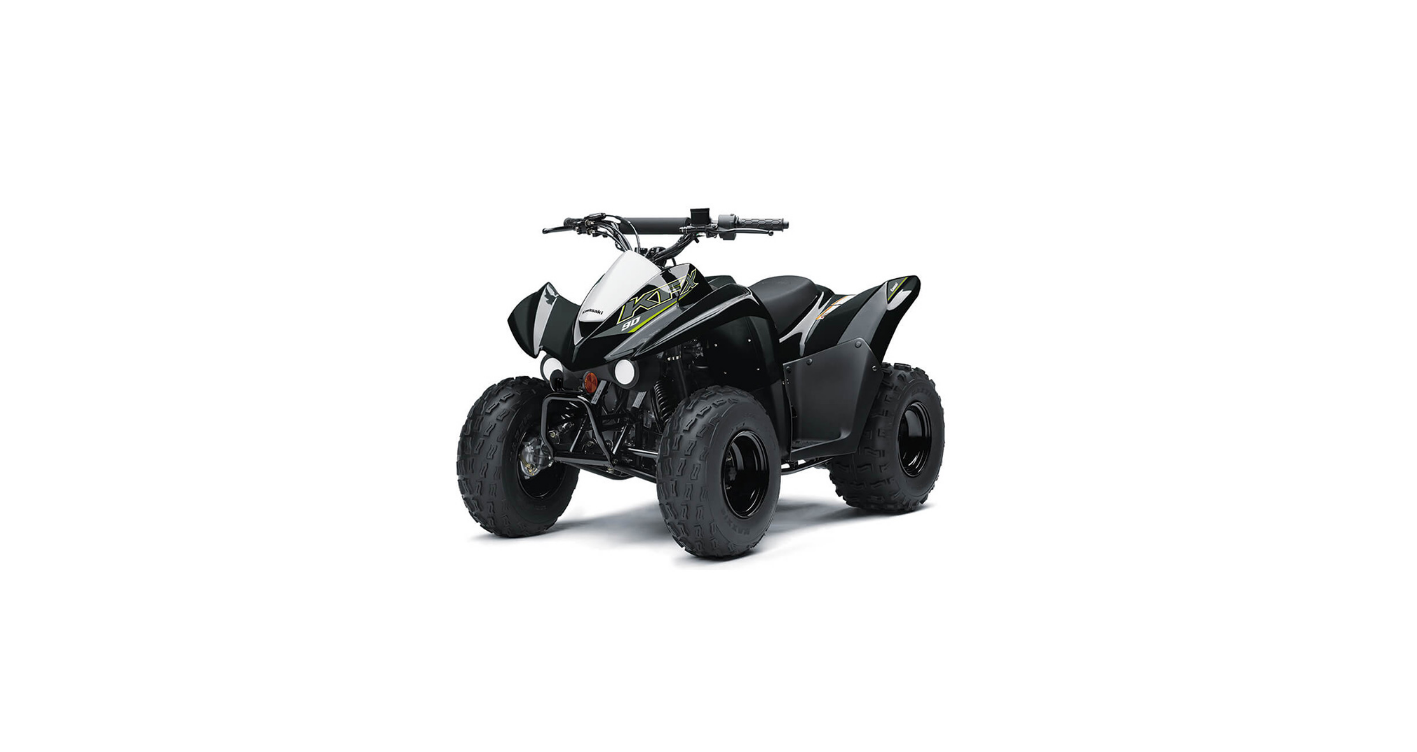2022 Kawasaki KFX 90 ATV Battery
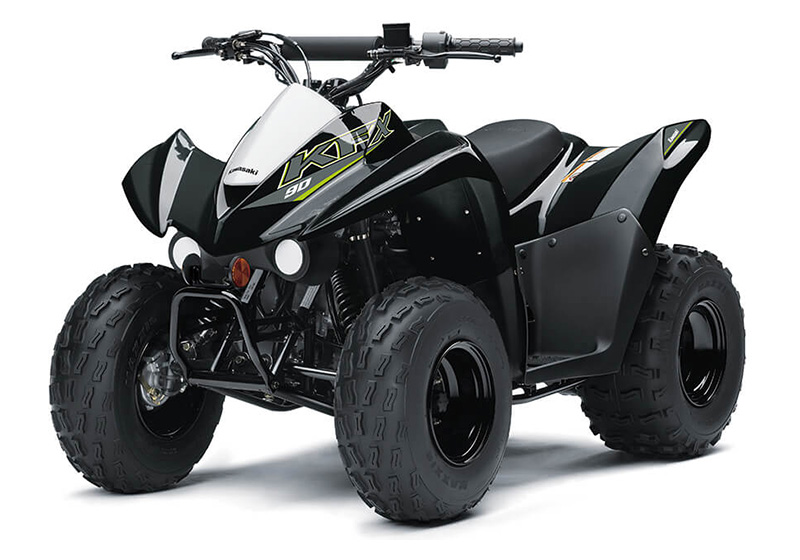
Battery
The battery is located under the seat.
WARNING
Heed the battery safety label shown here.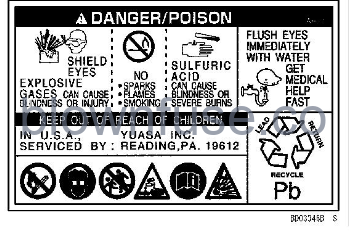
DANGER
HAZARD
Batteries contain sulfuric acid. Batteries produce hydrogen gas.
WHAT CAN HAPPEN
Sulfuric acid can cause burns. Hydrogen gas can cause an explosion.
HOW TO AVOID THE HAZARD
Read and understand the battery safety label. (see Location of Label chapter). The battery installed in this vehicle is a sealed type, and the sealing strip should not be removed at any time after the specified electrolyte has been installed in the battery for initial service. It is not necessary to check the battery electrolyte level or add distilled water. However, in order to maximize battery life and ensure that it will provide the power needed to start your vehicle you must properly maintain the battery’s charge. When used regularly, the charging system in your vehicle helps keep the battery fully charged. If your vehicle is only used occasionally or for short periods of time, the battery is more likely to discharge. Due to their internal composition, batteries continually self-discharge. The discharge rate depends on the type of battery and ambient temperature. As temperatures rise, so does the discharge rate. Electrical accessories, such as digital clocks and computer memory, also draw current from the battery even when the key is switched off. Combine such “key—off’ draws with hot temperature, and a battery can go from fully charged to completely discharged in a matter of days.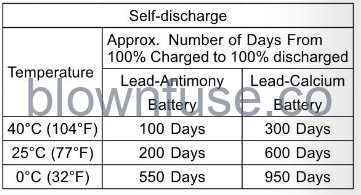
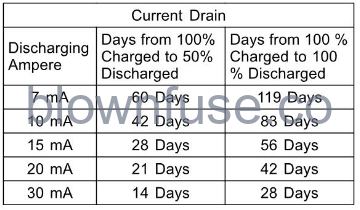 In extremely cold weather the fluid in an inadequately charged battery can easily freeze, which can crack the case and buckle the plates. A fully charged battery can withstand sub-freezing temperatures with no damage.
In extremely cold weather the fluid in an inadequately charged battery can easily freeze, which can crack the case and buckle the plates. A fully charged battery can withstand sub-freezing temperatures with no damage.
Battery Sulfation
A common cause of battery failure is sulfation. Sulfation occurs when the battery is left in a discharged condition for an extended time. Sulfate is a normal by-product of the chemical reactions within a battery. But when continuous discharge allows the sulfate to crystallize in the cells, the battery plates become permanently damaged and will not hold a charge. Battery failure due to sulfation is not warrantable.
Battery Maintenance
It is the owner’s responsibility to keep the battery fully charged, Failure to do so can lead to battery failure and leave you stranded. If you are riding your vehicle infrequently, inspect the battery voltage weekly using a voltmeter. If it drops below 12.8 volts, the battery should be charged using an appropriate charger (check with your kawasaki dealer or visit buykawasaki.com). If you will not be using your vehicle for longer than two weeks, the battery should be charged using an appropriate charger. Do not use an automotive-type quick charger that may overcharge the battery and damage it.
NOTE
Leaving the battery connected causes the electrical components to make the battery discharge, resulting the over-discharge of the battery. In this case, the repair or replacement of the battery is not included in the warranty. If you do not drive for four weeks or more, disconnect the battery from the vehicle,
Kawasaki-recommended chargers are:
Battery Mate 150-9 OptiMate 4 Yuasa MB-2040/2060 Christie C10122S If the above chargers are not available, use an equivalent one. For more details, ask your Kawasaki dealer.
Battery Charging
- Remove the battery from the vehicle (see Battery Removal).
- Attach the leads from the charger and charge the battery at a rate (amperage x hours) that is indicated on the battery. If it is not possible to read the rate, charge the battery at an amperage that is about 1110th of the battery capacity.
- The charger will keep the battery fully charged until you are ready to reinstall the battery in the vehicle (see Battery Installation).
NOTICE
Never remove the sealing strip, or the battery can be damaged. Do not install a conventional battery in this vehicle, or the electrical system cannot work properly.
NOTE
If you charge the sealed battery, never fail to observe the instructions shown on the label on the battery and battery charger.
WARNING
HAZARD
Battery posts, terminals and related accessories contain lead and lead compounds, chemicals known to the State of California to cause cancer and reproductive harm.
WHAT CAN HAPPEN
Could cause a health problem.
HOW TO AVOID THE HAZARD
Wash hands after handling battery.
Battery Removal & Inspection
- Make sure the ignition switch is OFF.
- Remove the seat.
- Remove the battery cover, by removing the mount bolts.
- Disconnect the negative (—) terminal cable from the battery first, then disconnect the positive (+) terminal cable.
- Remove the battery.
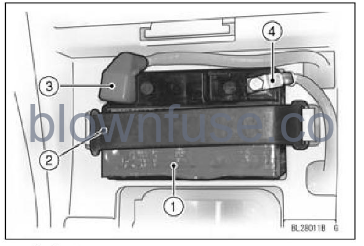 Battery
Battery- Rubber band
- Positive (+) terminal
- Negative terminal
- Clean the battery using a solution of baking soda and water. Be sure that the cable connections are clean.
- Perform a visual inspection. Inspect for defective or cracked case and cover, and loose or damaged terminal posts or cables. Replace battery and/or cables immediately if any damage is found.
Battery installation
- Install in the reverse order of removal.
- Check all bolts and Other fasteners are secure.
- After installing the battery, check to see if the battery cables are routed correctly.
WARNING
HAZARD
Loose battery cables.
WHAT CAN HAPPEN
Can create sparks which can cause a fire or explosion resulting in injury or death.
HOW TO AVOID THE HAZARD
Make sure the battery terminal screws are tightened securely and the covers are installed over the terminals.
NOTICE
Do not reverse the battery connections, or damage to the regulator/rectifier unit will result.
